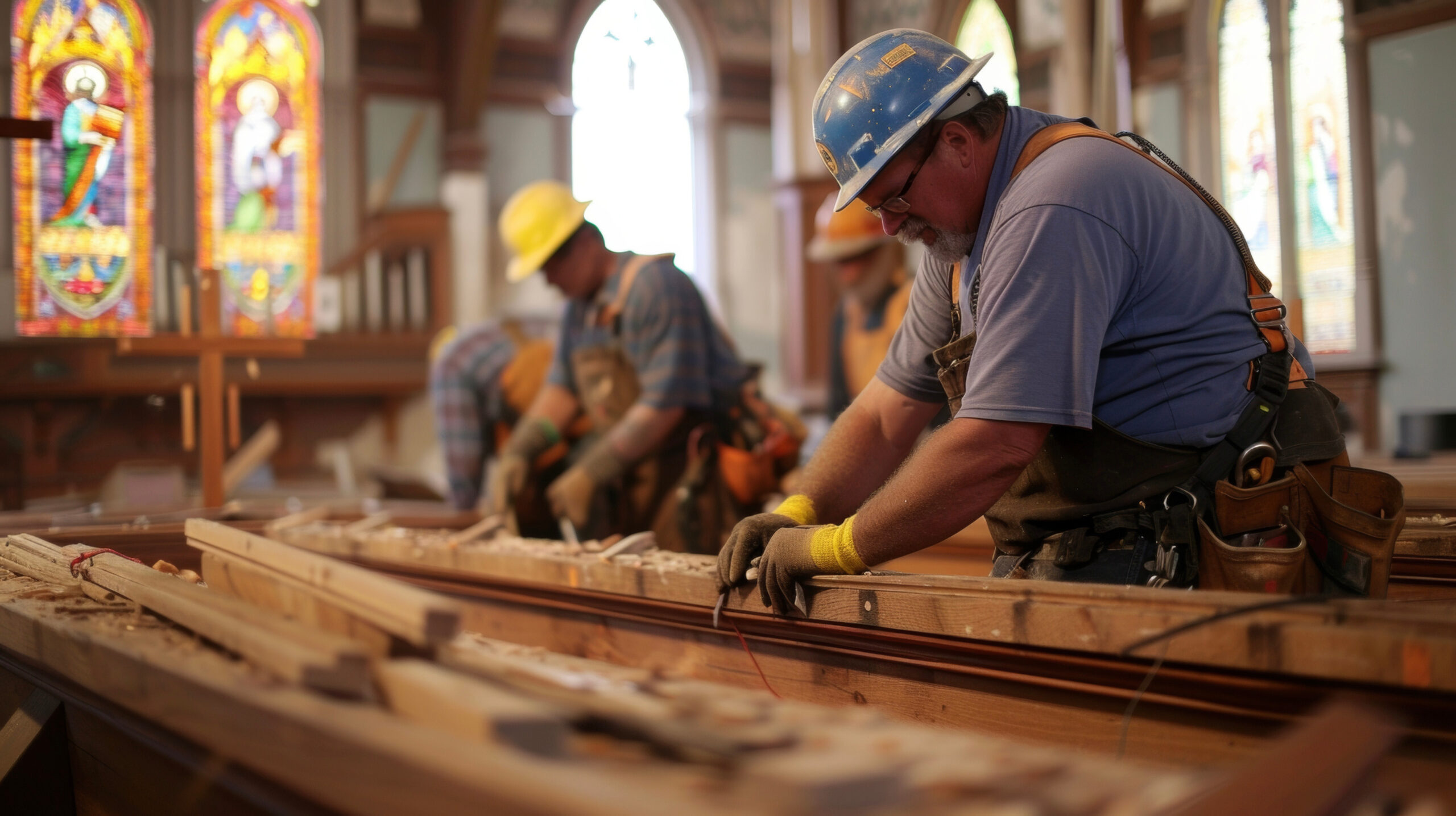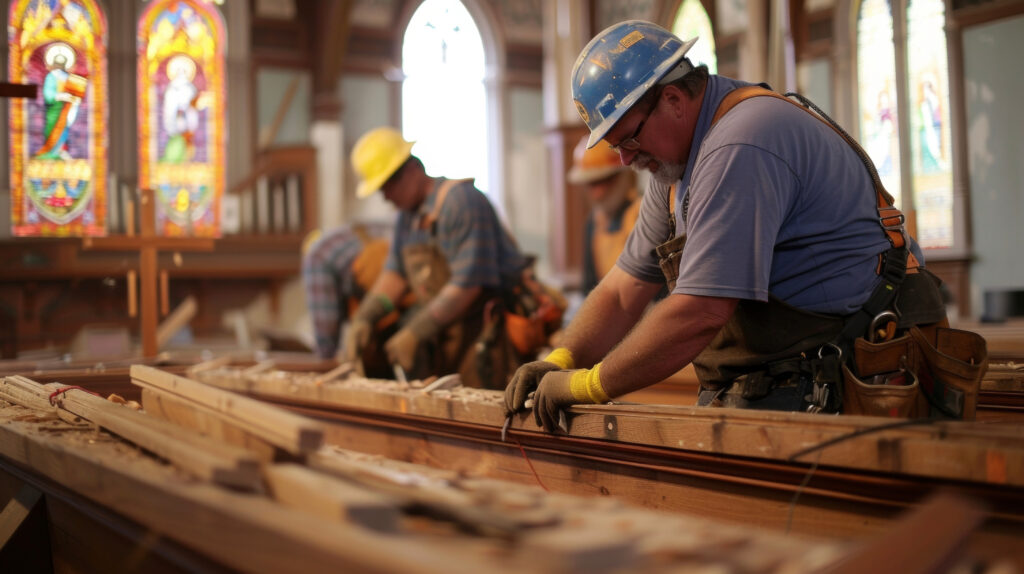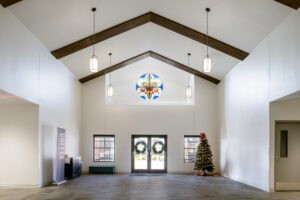
Renovating churches has always carried a deeper significance beyond the realm of mere construction. Churches serve as timeless symbols of faith and community, embodying the history and heritage of communities across generations. When it comes to renovating these sacred spaces, the approach goes beyond standard construction practices, intertwining faith, history, and architectural preservation.
Renovating Churches with Faith-Based Construction
Enhancing sacred spaces means preserving history, fostering spiritual growth, and embracing inclusive and sustainable practices.
Preserving Heritage and Tradition
Churches often stand as iconic symbols of a community’s history and heritage, with the architecture and design reflecting the beliefs and cultural influences of the period in which they were constructed. When renovating churches, it is crucial to prioritize preserving these historical elements while ensuring structural integrity and functionality.
Incorporating faith-based construction practices involves a holistic approach that respects the sacredness of the space while integrating modern structural and design elements. This delicate balance requires a collaborative effort between architects, preservationists, and religious leaders to ensure that the essence and character of the church are respectfully maintained during the renovation process.
Embracing Spiritual Rejuvenation
Beyond the physical structure, renovating churches encompasses a spiritual aspect that sets it apart from other construction projects. The renovation process offers an opportunity for the community to come together in a shared commitment to invigorating their spiritual home.
Churches are not merely buildings but sanctuaries providing solace, hope, and a sense of belonging. The renovation process, when approached with faith-based principles, aims to create an atmosphere that resonates with the congregation’s spiritual needs, offering a space that encourages contemplation, reverence, and connection with the divine.
Incorporating Sustainable Practices
In the contemporary world, the concept of sustainable and eco-friendly construction practices has become increasingly vital. When renovating churches, integrating sustainable design and construction methods aligns with the stewardship ethos often upheld in religious communities. It reflects a commitment to environmental responsibility and a desire to preserve the earth’s resources, which are often seen as sacred gifts.
Faith-based construction embraces sustainable practices that minimize the renovation process’s ecological footprint. These can involve the use of renewable materials, energy-efficient lighting and heating systems, and environmentally conscious design choices. By prioritizing sustainability, churches can further demonstrate their dedication to being good stewards of the earth while setting an example for the broader community.

Enhancing Accessibility and Inclusivity
As sacred spaces are meant to welcome all, churches must be accessible to individuals of diverse abilities and backgrounds. Renovating churches with faith-based construction principles involves ensuring that the space is inclusive and accommodating to everyone. This may encompass installing ramps and elevators for individuals with mobility challenges, creating accessible restroom facilities, and incorporating features that cater to the varying needs of the congregation.
Beyond physical accessibility, faith-based construction also considers the space’s emotional and spiritual inclusivity. The renovation process can focus on creating a welcoming and inclusive environment that embraces diversity and encourages unity among all community members. Whether by designing gathering areas or incorporating multi-sensory elements, the goal is to ensure that everyone feels welcomed and valued within the sacred space.
Revitalizing Outreach and Mission
Church renovations present an opportunity to revitalize the physical structure and reinvigorate the church’s outreach and mission. The renovation process can be a catalyst for inspiring the congregation to engage in community service, outreach programs, and initiatives aimed at addressing social issues. By aligning the renovation with the church’s mission, it becomes a platform for community involvement and a tangible expression of the congregation’s commitment to service and compassion.
Common Church Renovations
When it comes to renovations and restorations in churches, there is a wide range of possibilities to enhance and preserve. Some common types of renovations and restorations in churches include:
Structural Repairs: Over time, a church’s structural integrity may deteriorate due to factors such as aging, weather damage, or architectural issues. Structural renovations involve repairs to the foundation, walls, roofs, and other essential components to ensure the building’s stability and safety.
Roof Restoration: The church’s roof is critical to protecting it from weather elements. To prevent leaks and improve overall durability, roof restoration may involve repairing or replacing damaged shingles, tiles, or metal sheets.
Interior Renovations: A church’s interior can undergo various renovations to enhance its aesthetic appeal and functionality. These may include updating flooring, refurbishing pews or seating arrangements, restoring or replacing stained glass windows, repairing or repainting walls, and improving acoustics and lighting.
Accessibility Improvements: To ensure that the church is accessible to individuals with diverse abilities, renovations may focus on installing ramps, elevators, or chairlifts for improved mobility. Accessible restroom facilities, signage, and seating arrangements may also be incorporated to create a welcoming environment for all attendees.
Exterior Renovations: A church’s exterior plays a crucial role in its visual impact and architectural integrity. Exterior renovations may involve repairing or repainting the facade, restoring stonework or brickwork, improving landscaping, and enhancing lighting to highlight the building’s architectural features.
Safety and Compliance Upgrades: Churches must also comply with safety codes and regulations. Renovations may involve adding fire detection and suppression systems, upgrading electrical wiring, installing emergency exits, and improving accessibility to meet building codes and ensure the safety of the congregation.

Renovating Churches Near Houston with Faith-Centered Expertise: Axis Builders
When it comes to renovating churches, working with Axis Builders ensures a comprehensive and faith-centered approach to construction. Axis Builders understands the sacred nature of these spaces and emphasizes the preservation of historic elements while integrating modern design and functionality. With their expertise in faith-based construction, the team at Axis Builders collaborates closely with architects, preservationists, and religious leaders to ensure that every renovation project aligns with the church’s unique needs and spiritual essence.
From structural repairs to interior revitalization, Axis Builders brings a deep appreciation for the heritage and significance of churches, creating spaces that foster spiritual growth, inclusivity, and sustainable practices. Choosing Axis Builders for church renovations ensures a seamless journey that respects tradition, enhances sacred spaces, and revitalizes the congregation’s connection to their faith.







